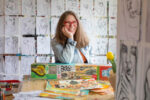Deborah Putnoi has taken the innovative drawing prompts she pioneered in the Drawing Lab Program and adapted them for the Passover seder. Her new Haggadah is aptly called “Interactive Drawing Haggadah.” The Newton-based artist has teased out the sensory experiences of the seder by asking participants to connect to drawing in a “meditative way” over the course of 60 pages of artwork and drawing prompts. The all-ages Haggadah is available for download for $9.99.
First and foremost, Putnoi wants seder participants to liberate their inner artists. For example, she puts on music at the beginning of the seder that suggests the sounds of the desert. “I ask everyone at the seder to close their eyes and let their pencils hear the music, and then the sounds of the desert,” she recently told JewishBoston. “It can be something as simple as hearing rustling noises the wind makes. It allows one to be present in the story and understand that the seder is really about the senses.”
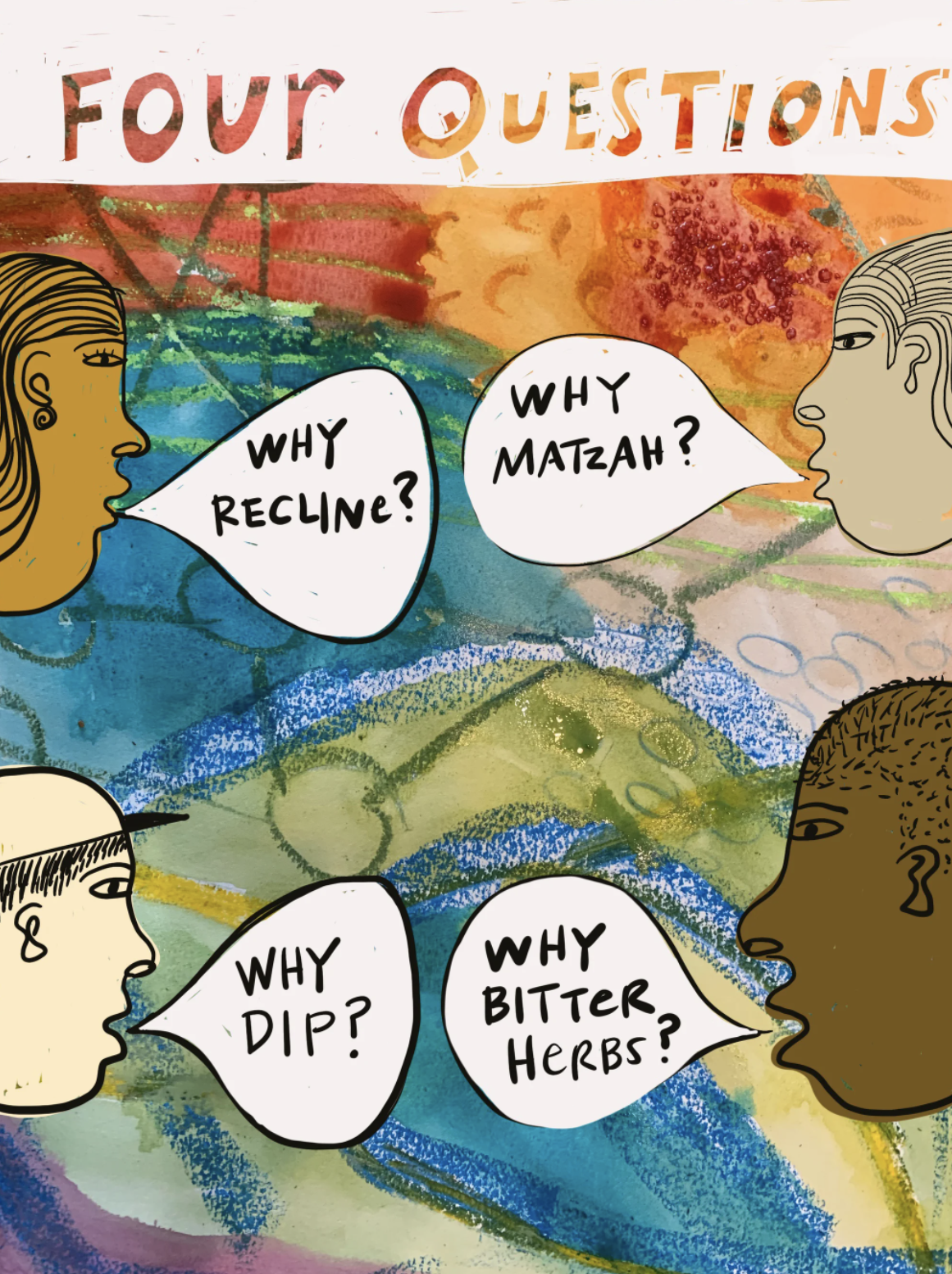
Related
At one point, Putnoi’s Haggadah asks participants to draw the “taste experience of the Hillel sandwich.” People can begin by parsing out the sandwich’s distinct ingredients of matzo, charoset or maror (bitter herbs). How does each of these ingredients contribute to the overall effect of eating the sandwich? How do these ingredients work in concert? “It’s similar to when I ask people in Drawing Lab to think of a time when you felt sad and have that experience come out on the page as you’re metabolizing and connecting to that emotion,” she said.
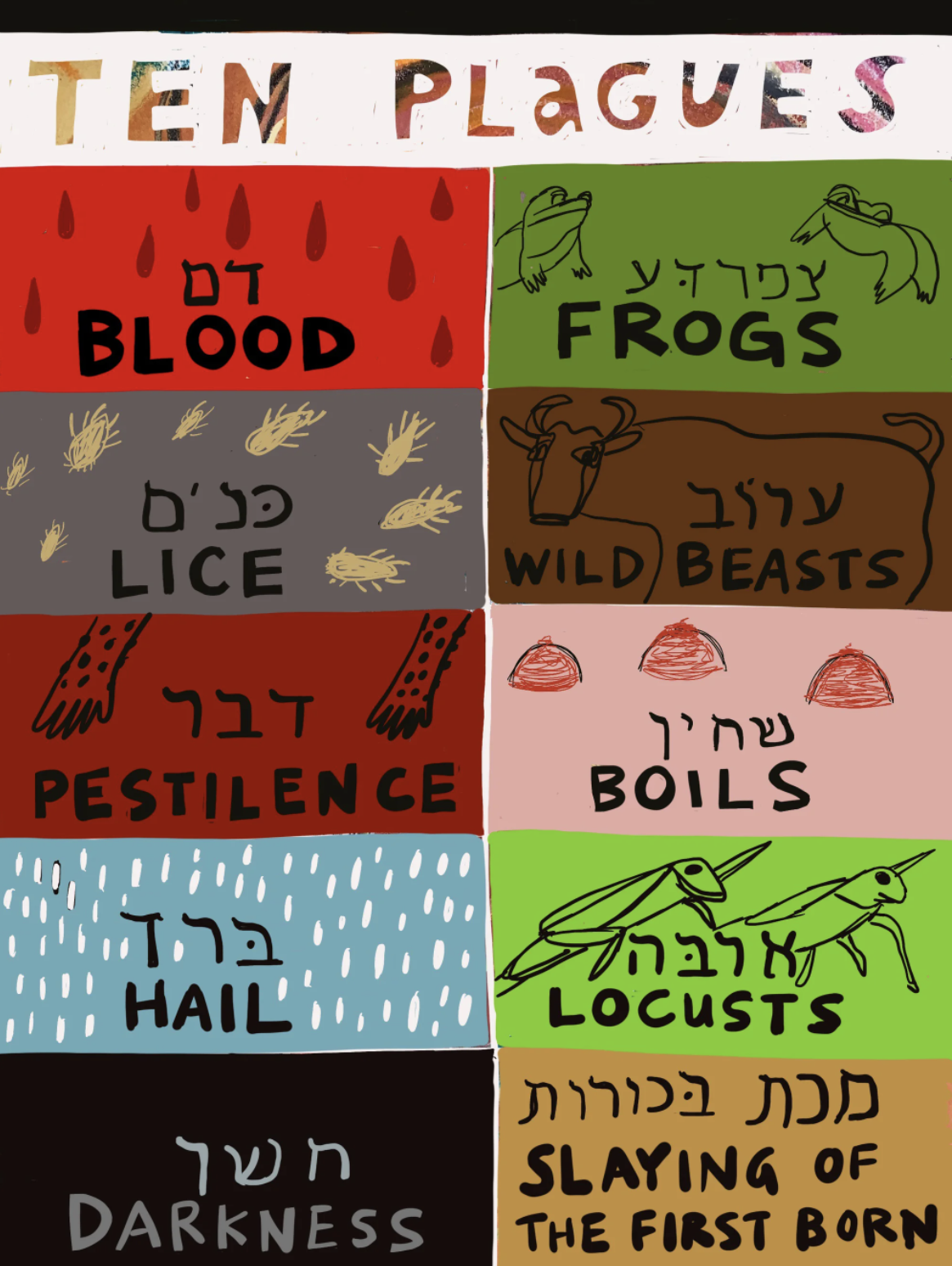
Putnoi offers a similar exercise for the seder, inviting people to think about a time when they felt enslaved or trapped. “Don’t draw a person looking sad, but access that feeling in your body. Have it come out on the page,” she said. “And then, after you’ve gone through the story, what does it feel like to be free?” A companion exercise in the Haggadah asks people to draw freedom using only a set of marks. Putnoi asks: “Are they swirly marks? Are they groups of dots? The extra step of drawing allows you to hear better and taste in a new way.”
Putnoi noted the important distinction between doodling and the drawing she encourages people to do. Doodling can feel playful, which has its place in the artistic process. However, throughout the seder, Putnoi asks people to connect to experiences and the accompanying emotions of freedom, enslavement, bitterness and sadness. These emotions can be concrete and abstract. “When you’re drawing,” said Putnoi, “it’s not always a playful thing. In this case, it’s the Passover story. I feel like it’s an extra layer of dropping into the story.”
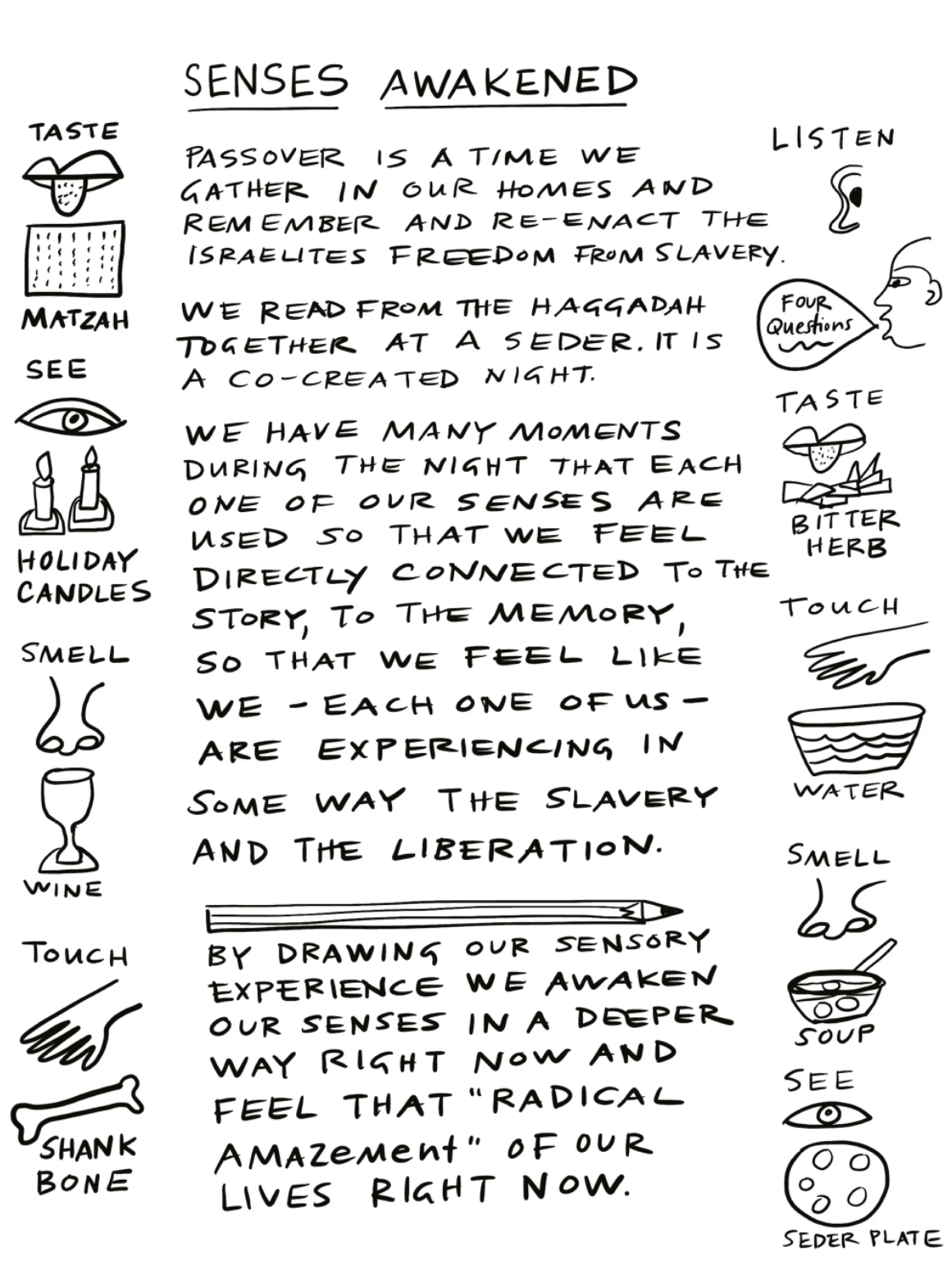
It’s also about excavating one’s emotions that are just beneath the Passover story. “A lot of people have given me feedback that they feel liberated using the marks,” she said. “It helps them find a piece of themselves they didn’t know they were missing. It’s a form of self-care, especially during this time of COVID. Doctors, researchers and therapists have participated in the Drawing Lab, and they tell me they are connecting back to something they didn’t realize they had lost.”
Putnoi emphasized that her Haggadah is not only a kids’ Haggadah; it is meant to engage children and adults alike. However, she said the kids who use it quickly understand the experience she is trying to convey. “The kids teach their parents, so it’s flipping roles,” she said. “The point of using any art is to try and get back to investigating and being curious and experimenting and thinking about the world in a very open way. As adults, we get locked down in terms of drawing, and especially creativity. Watching kids investigate brings us back to a place of openness. You’re curious and open to the Passover story as if you were a kid. That’s the goal of my Haggadah.”
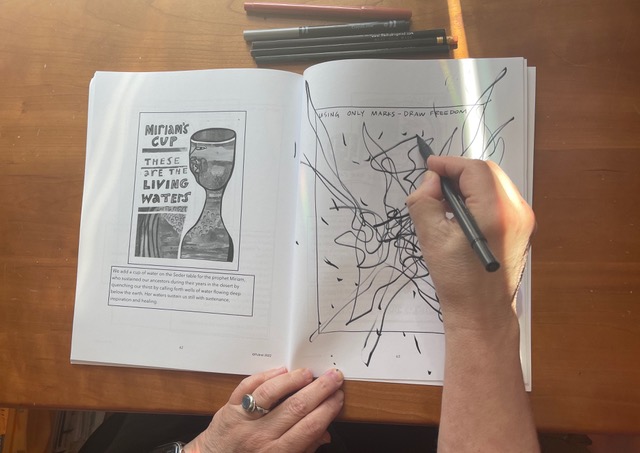
As for the four cups of wine interspersed throughout the seder, Putnoi asks people to contemplate their journeys “of seeing injustices in the world” with the first cup. How will we commit to building a more just world? The second cup of wine evokes God’s promise to deliver the Israelites from bondage. How will we help to lift up others? The third cup of wine, the promise of redemption, is a call to advance justice. What one thing can we commit to that brings about positive change? And the fourth cup of wine reminds us of God’s promise to take the Israelites in as God’s people. Embracing the spirit of God’s promise of a relationship, how can we welcome the stranger, feed the hungry and acknowledge each person’s humanity and divinity?
The seder ends with the declarative wish to be in Jerusalem next year. Putnoi amplifies that hope by declaring, “Next year in a just world,” and encourages people to draw what a just world feels like to them.



